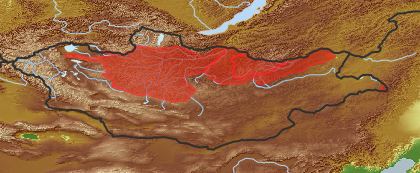| Class: | angiosperms |
| Order: | Ranunculales |
| Family: | Menispermaceae |
| Genus: | Menispermum |
| Herbar: | list records  |
| open map in a new window |  |
| species: 1 |
| Habit (i)general appearance of a plant | |
| Special growth forms or habits: | climber or liana (i)Plant with twinging stems
example: Clematis, Menispermum 
|
| Parasite status: (i)Is the plant a half- or full parasite? | no parasite/saprophyte (i)Plant fully autonomous, leaves with chlorophyll
example: Most plants, Ranunculus  inherited by family Menispermaceae: no parasite/saprophyte inherited by family Menispermaceae: no parasite/saprophyte
|
| Water or terrestrial plant: (i)Where do the plants grow? | terrestrial (i)Plant grows on dry land
example: Orostachys spinosa  inherited by family Menispermaceae: terrestrial inherited by family Menispermaceae: terrestrial
|
| Leaf (i)expanded, usually photosynthetic organ of a plant (including phylloclades) | |
| Leaf development: (i)Structure and development of leaves. | with green leaves (i)Plant with green leaves  inherited by family Menispermaceae: with green leaves inherited by family Menispermaceae: with green leaves
|
| Flower (i)reproductive portion of the plant, consisting of sepals, petals, stamens, and pistils | |
| Ovary position: (i)For entirely or partly fused carpels, describe their position in relation to the insertion point of perianth leaves (best done by doing a longitudinal section of a flower). | superior (hypogynous) (i)Base of carpels attached above insertion point of perianth leaves, carpels free or fused
example: Delphinium, Anemone    inherited by order Ranunculales: superior (hypogynous) inherited by order Ranunculales: superior (hypogynous)
|
| Root / shoot below ground (i)plant part below ground (in most cases), including below ground shoots, without leaves | |
| Root type: (i)Organisation of the roots. | allorhizous (i)Plant with a conspicuous tap root, one larger tap root with side roots
example: Dicotyledonae  inherited by order Ranunculales: allorhizous inherited by order Ranunculales: allorhizous
|